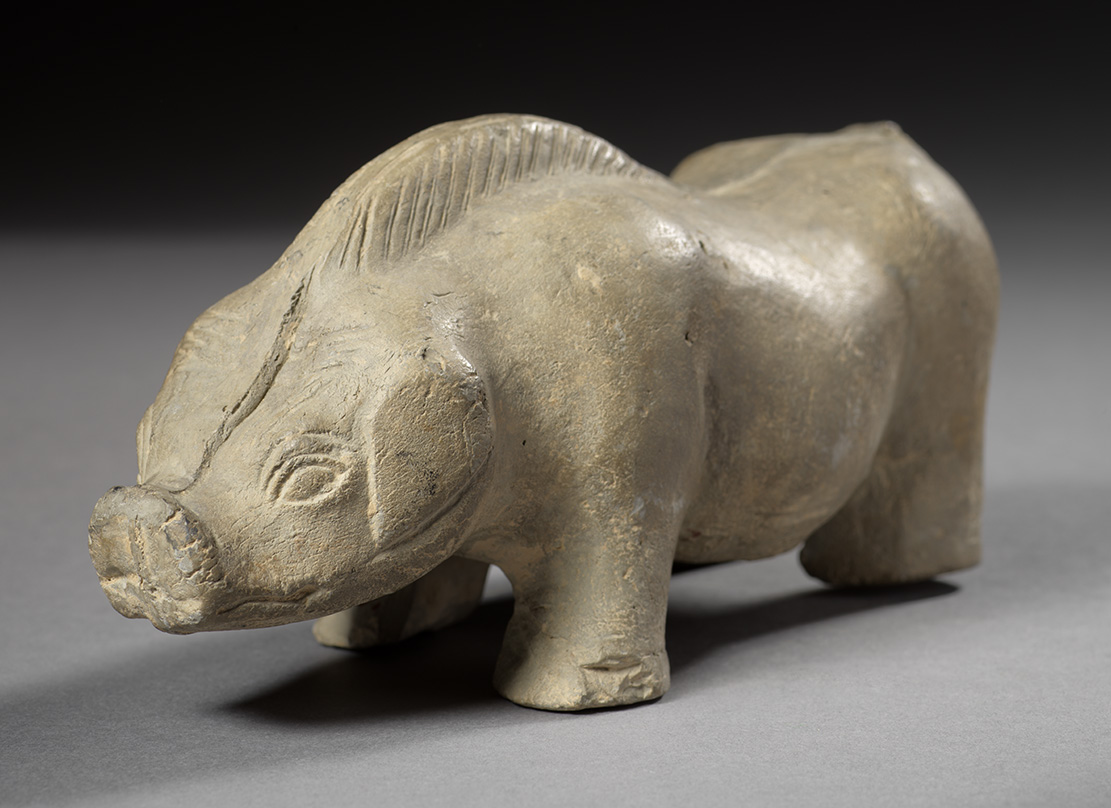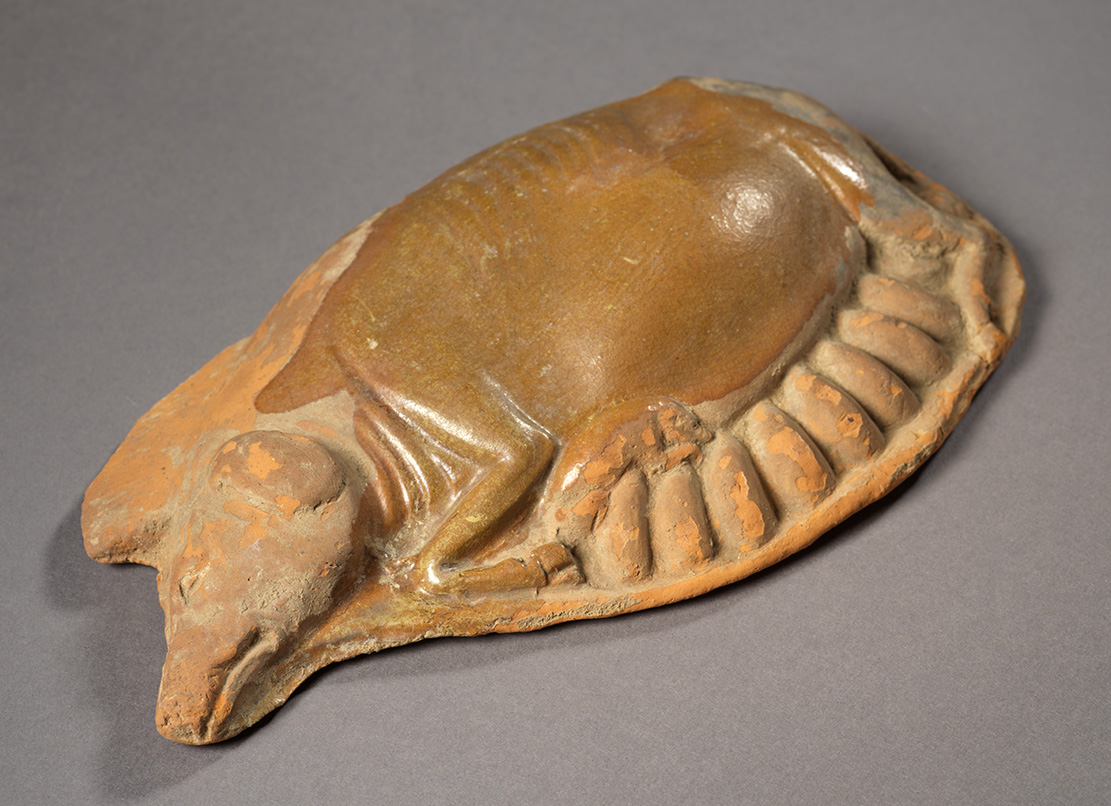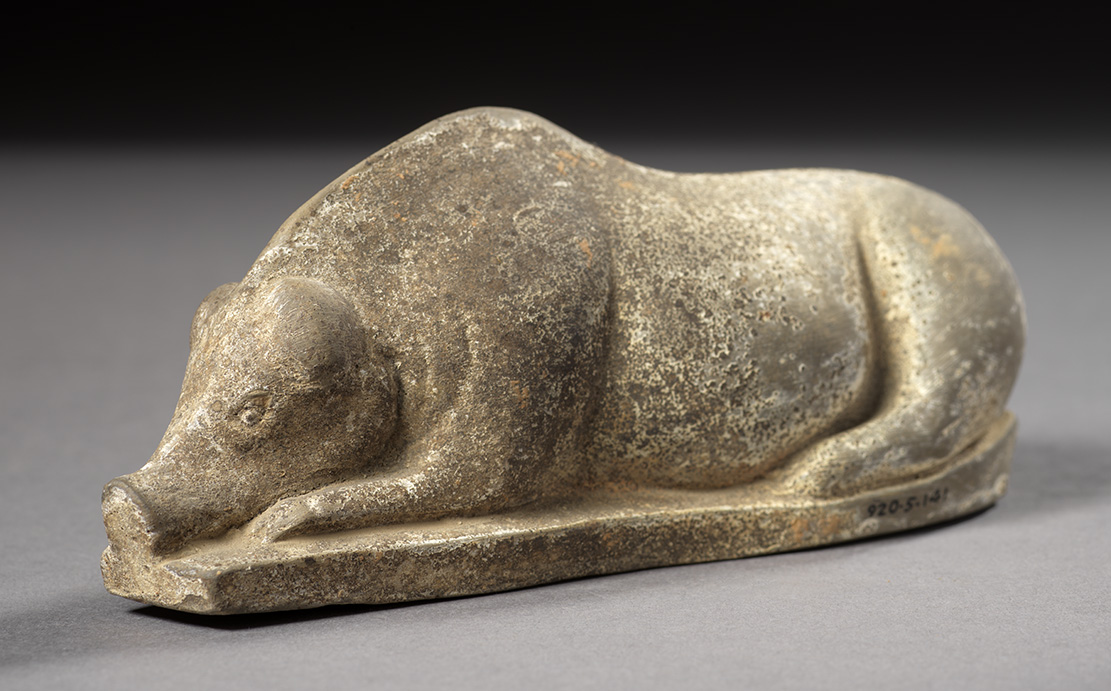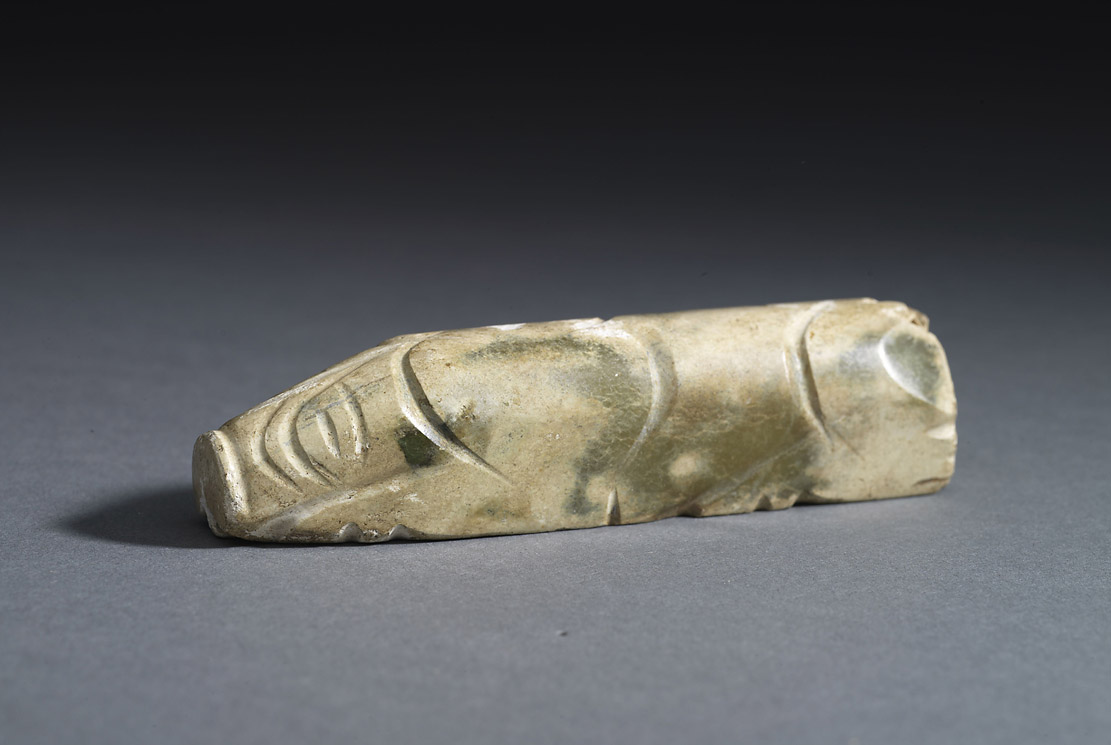Celebrating the Year of the Pig

Burial figure of a pig , earthenware, Eastern Han Dynasty (late 2nd-early 3rd century), China
918.17.57
Sir Edmund Walker Collection
February 5th, 2019, marks the beginning of the year of the pig 猪. The twelfth and last animal in the Chinese zodiac. People born in the year of the pig are said to be loving and kind. On the other hand, they can be stubborn and dawdle on tasks.
The pig is the earliest domesticated animals in ancient China dating back to 9000 years ago. Evidence of early pig bones and skeletons have been excavated in important archaeological sites such as Cishan in Heibei province, Xiangfen in Shanxi province, and Jiahu in Henan province.
The pig is also a figure commonly used in pottery for burial goods in ancient China. Models of houses, tools, and furniture were also popular. As human and animal sacrifices declined during the Han dynasty (206 BC - AD 220), funerary goods reached their peak, where pottery figures of humans and animals were placed in the tombs with the deceased to accompany them in their afterlife.

Earthenware burial figure of sow and piglets, Northern Dynasties period (550-618), China
926.21.76
Bishop William C. White Collection

Earthenware burial figure of a pig, Northern Dynasties period (early 6th century), China
920.5.141
The George Crofts Collection
It was a common practice during this time to place an object in each hand of the deceased to symbolize the possession of wealth. Since pigs in ancient China were associated with wealth and luxury, jade figurines in the form of the pig as burial goods were particularly prevalent. Usually in a pair and rectangular in shape, the figurines were placed in each hand of the deceased, a burial custom intended to provide a prosperous afterlife. During Western Han, this type of burial practice were exclusive to the high ranking noble families. It was not until Eastern Han, the burial practice of placing pigs in the hands of the deceased became more common. However, the carving of these jade pig figurines were less exquisite and less detailed than those produced in Western Han. The jade material were also often replaced by limestone or marble.

Carved figure of a pig, worked and polished jade, Han Dynasty (late 3rd century BC-early 3rd century AD), China
929.11.82
Bishop William C. White Collection
The Chinese character for pig can be first observed as oracle bones inscriptions - various animal bones once used for pyromacy, dating to the Shang dynasty (1766-1050 B.C.). Interestingly, the Chinese character for home “家” utilizes the character for pig “豕". This signifies the importance of the role of pig domestication in the lives of the people in ancient China, as well as to the ancient Chinese civilization.
To celebrate the Year of the Pig, a special exhibition presents a selection of exquisite objects from the ROM’s Chinese collection. Please visit the Joey and Toby Tanenbaum Gallery of China on Level 1 and see if you can spot any other pig related objects that are displayed throughout the gallery!
This blog is by Kara Ma.
